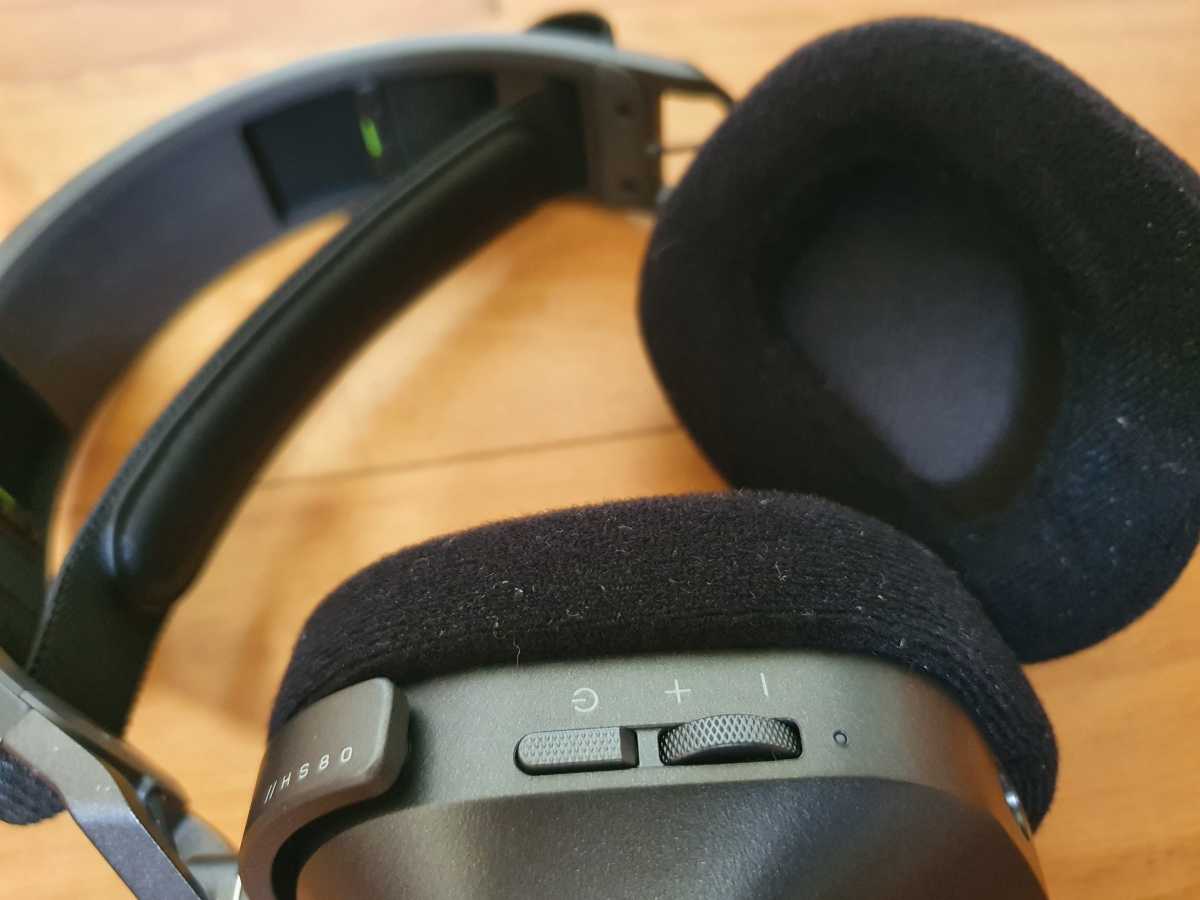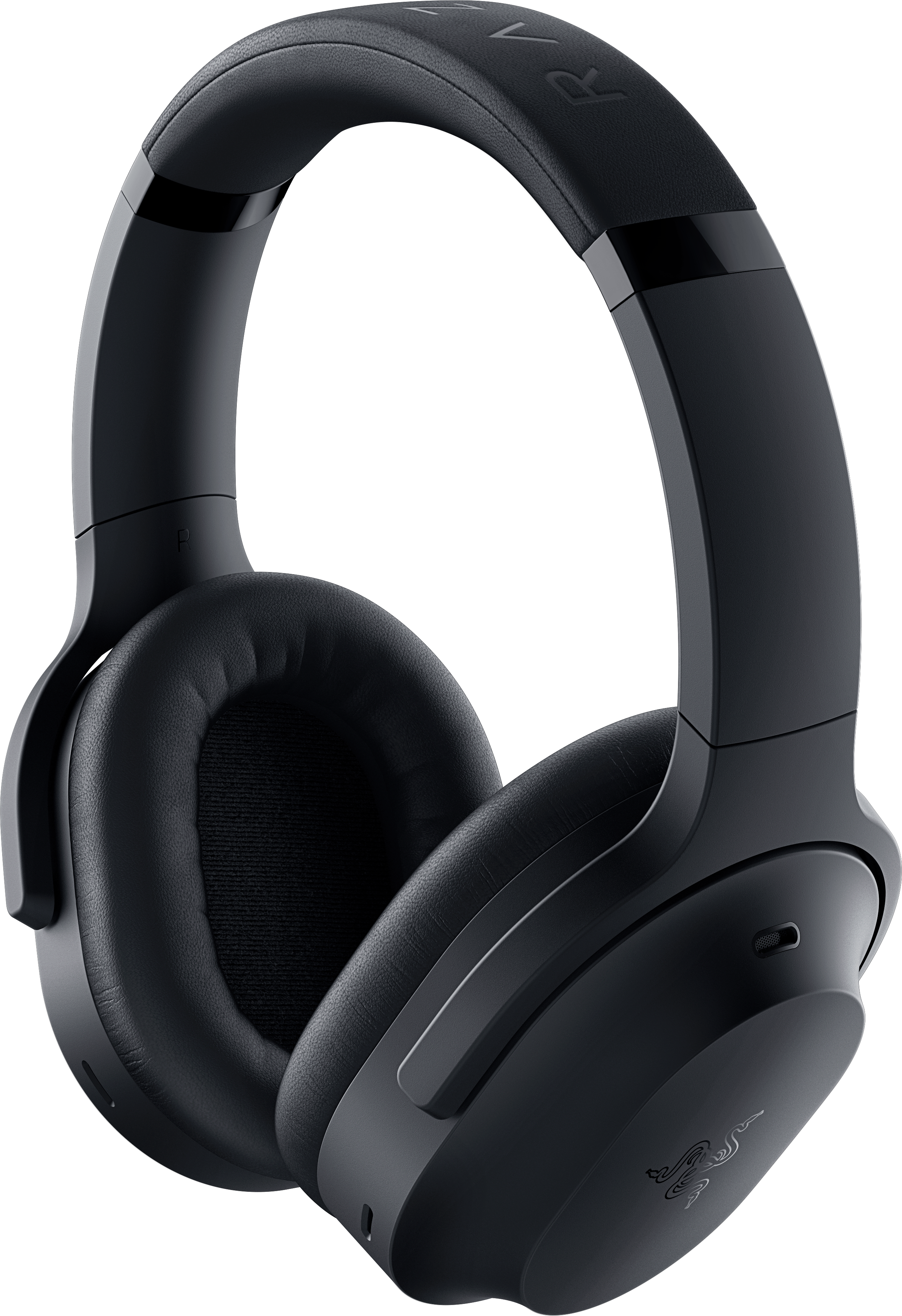 At a glance
At a glanceExpert's Rating
Pros
- Great audio performance with neutral mid-tones
- Lightweight, comfortable design
- Mesh coverings on the earcups minimize sweat
- Flip-to-mute mic
Cons
- The omnidirectional mic is not detachable
- Lacks true simultaneous connectivity for listening to multiple audio sources at once
- The small RGB light zones feel like an afterthought
Our Verdict
The Corsair HS80 Max has almost everything you could want in a gaming headset for an enjoyable gaming session — clear high-resolution audio, a comfortable and stylish design, and good cross-platform compatibility. While you can’t listen to audio sources from Bluetooth and Wi-Fi at the same time, both connection types do work at long range. The headset’s battery life is also very decent.
Best Prices Today: Corsair HS80 Max
Too often I test premium headsets that, although they have stellar audio, are heavy and fatiguing, weighed down by too much metal and stuffy leatherette fabric — materials which have become in a way hallmarks of what constitutes a premium pair of cans. But the Corsair HS80 Max turns the tables on that in no small way.
Indeed, this headset trades leatherette for a cool mesh fabric and too much metal in the earcups for lightweight but strong plastic ones, both of which make it incredibly comfortable for long gaming stints.
Yet while this headset dares to be different, it foregoes none of the top-quality audio you’d expect from a premium gaming headset. At $179.99 it’s also cheaper than rivals like the $249.99 Razer Barracuda Pro and $379.99 SteelSeries Arctis Nova Pro. Read on to find out more.
Further reading: See our roundup of the best wireless gaming headsets to learn about competing products.
Corsair HS80 Max: Design and build
Light and flexible, and with a mainly plastic design that weighs just 12.4 ounces, I found I could wear the HS80 Max all day long without any issues. Comfort has been made an obvious priority — the headset features a floating headband with a covering that protects the top of your head from the firmer headband above it.
The HS80 Max’s earcups are on the soft side, but they feel nice and airy. Their mesh covering kept my ears cool even during long stints gaming. It also prevented me sweating, something for which I was very glad during a hot spell in the weather.
Even when you’re not wearing them, these cans are remarkably comfy. The cups can swivel 180 degrees, which meant I could easily lay them flat on my neck. There’s very little clamp pressure to speak of, so there’s none of that wrestling I often have to do to put my headsets on. One small nit-pick in the design is that the headband isn’t vertically adjustable, which could be an issue for some users.
Not every headset gives you such a signal distance to enjoy, and I was quick to make use of that functionality to wander around my work kitchen while keeping the latest episode of PCWorld’s The Full Nerd podcast streaming from my laptop…
Plastic isn’t always fantastic when it comes to headset durability, but the HS80 Max is quite robust. It held up well in my testing, seeming impervious to damage during an accidental fall off my desk onto a tiled floor. It also avoided being scratched up by the keys in my backpack.
There is one design issue you’ll want to be wary of: The headset has cords that reach up through small triangular openings above the earcups and these are dangerously vulnerable to accidental snipping or breaking. Ideally, you’re going to want to house this headset in a case.
From a style perspective, the HS80 Max has a lot of swagger. I really dig the uniquely shaped cups which are “ear-shaped” rather than round or oval. They bring an originality to the look that doesn’t need much else to prop it up.
That said, the exterior of the earcups in my Steel Gray colored set look handsome too, the gray paint job contrasting nicely with the black of the inner material. The plastic has a stain finish to it, so it looks altogether premium. The headset’s RGB lighting, however, seems like kind of an afterthought. It appears only in the small Corsair sail logos on each cup.
Corsair HS80 Max: Connectivity and compatibility
I used my review unit mostly with my PC and Android phone, but it’ll work just as well with a Mac, iPhone, PS5, PS4, or Nintendo Switch console.
The headset boasts both 2.4GHz wireless connectivity as well as Bluetooth 5.2 connectivity. While you can be connected to both at once, they can’t be used simultaneously; the headset automatically paused my in-game audio for incoming cellphone calls and returned when I hung up.
Of course, that meant playing my favorite tunes from my smartphone over a few rounds of Overwatch 2 was off the table — something I’d really expect a premium headset that costs $179.99 to be able to do. Still, a Bluetooth button on the right earcup made it very simple to switch between connectivity modes when I needed to.

The soft mesh fabric covering the HS80 Max’s earcups keeps your ears sweat-free.
Dominic Bayley / IDG
The Bluetooth button also doubles as a media controller. Other controls are scarce — the remaining two were a simple volume wheel and power button located on the left-hand earcup.
Both the Wi-Fi and Bluetooth have great range: In Bluetooth Mode, I got up to 30 feet away before the signal cut out. But in Wi-Fi Mode you can easily walk up to 50 feet away from your device.
To be sure, not every headset gives you such a signal distance to enjoy, and I was quick to make use of that functionality to wander around my work kitchen while keeping the latest episode of PCWorld’s The Full Nerd podcast streaming from my laptop back at my desk.
The HS80 Max has a very decent battery life too, but there’s a big difference in how long you get according to how you use it. With RGB switched on, my headset lasted a full 18 hours. However, Corsair says it can last for as long as 130 hours with RGB switched off and in Bluetooth Mode.
Corsair HS80 Max: Gaming performance
Custom 50mm neodymium drivers in the HS80 Max’s earcups convert electrical signals to sound, and judging by the crisp, clear audio they deliver, they’re extremely well-tuned for gaming. The audio quality is substantially better than what you get in some headsets, being a high-resolution signal of 24bit/96kHz.
The headset can comfortably hit very low bass notes and ear-splittingly high treble notes. The treble is delivered with the kind of pristine clarity that really shows up inferior headsets as sounding tinny by comparison. But the mid-tones are by far where this headset really shines — these tones sound neutral and warm, which is just what you want for an immersive gaming experience.
My playtesting mainly included rounds of Call of Duty Black Ops and CounterStrike 2. In COD: Black Ops the HS80 Max had me chomping at the bit to play after I heard its immersive rendition of the game’s pre-game soundtrack; it dropped deep electronic keyboard notes, and the full-bodied strings sounded emotive and raw.
The headset also surprised me by accentuating in-game sounds that I rarely notice, like the beeping of timed explosive charges. This brought a new depth to my gameplay.
In CS:2, footfalls were noticeably easy to hear even at low volumes, which made it simple to track both friendly units and enemies nearby. I was impressed by how the set handled explosions and gunfire too — it delivered these sounds with a smoothness that I could listen to all day. Indeed, there was no jarring thuds or cracking noises that I have a low tolerance for.
For added immersion in CS:2 I was very glad for the headset’s Dolby Atmos support. The HS80 Max comes with a free license for it on PC, which saves you the cost of having to purchase a license yourself. I found the surround sound substantially increased my directional awareness and brought a satisfying cinematic quality to games.
The HS80 Max’s microphone is omnidirectional and has convenient flip-to-mute functionality. I was hoping it would also be detachable for bus trips where I like listening to podcasts and don’t really want to look like I’m in full desktop gaming mode — but it’s undetachable.
Testing the microphone revealed it could reproduce my voice with passable clarity. The mic’s bendable boom end also allowed me to move it where I could get the best representation of my voice in chats.
Corsair HS80 Max: Software
The HS80 Max is used with Corsair’s iCUE software app. Here you can tweak EQ settings, personalize RGB lighting, and download firmware updates. iCUE also has a unique feature called Sonarworks SoundID, which allows you to calibrate the headset with an audio preset that best matches your listening preferences.
For this feature to work, you’ll need to first activate SoundID in the iCUE app and then undergo a hearing test and complete a survey that will ask for your feedback on different listening scenarios. Once you have your custom SoundID preset set up, you can then choose to switch it on or off whenever you want.
In my view, SoundID works well to optimize the headset’s sound in a general sense, but it is still quite generic. So, if you need very specific audio frequencies to be brought to the fore, such as to emphasize footfalls in FPS games, you’re best off tweaking your EQ settings manually. Still, I applaud Corsair for incorporating a feature like this, which just adds to the level of personalization you have at your fingertips.
Should you buy the Corsair HS80 Max?
After spending 32 hours playing with the Corsair HS80 Max I’m left wishing it had only two features — a detachable mic and simultaneous wireless audio. Everything else it does superbly — excellent high-resolution audio, tons of comfort, and unique, attractive styling. At $179.99 it’s not cheap, but cheaper than some premium rivals, which makes it easier to recommend as a great choice for discerning gamers.





